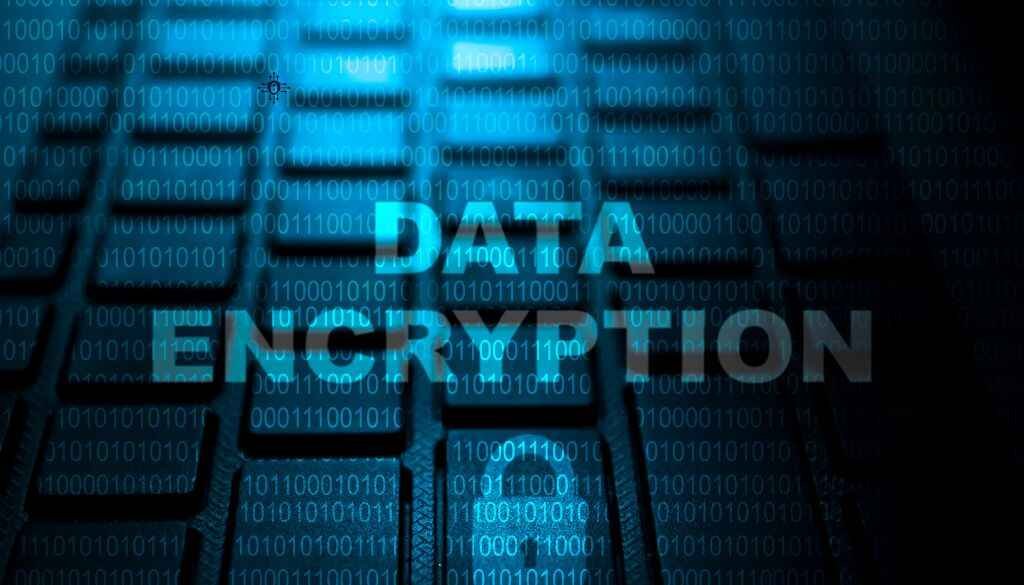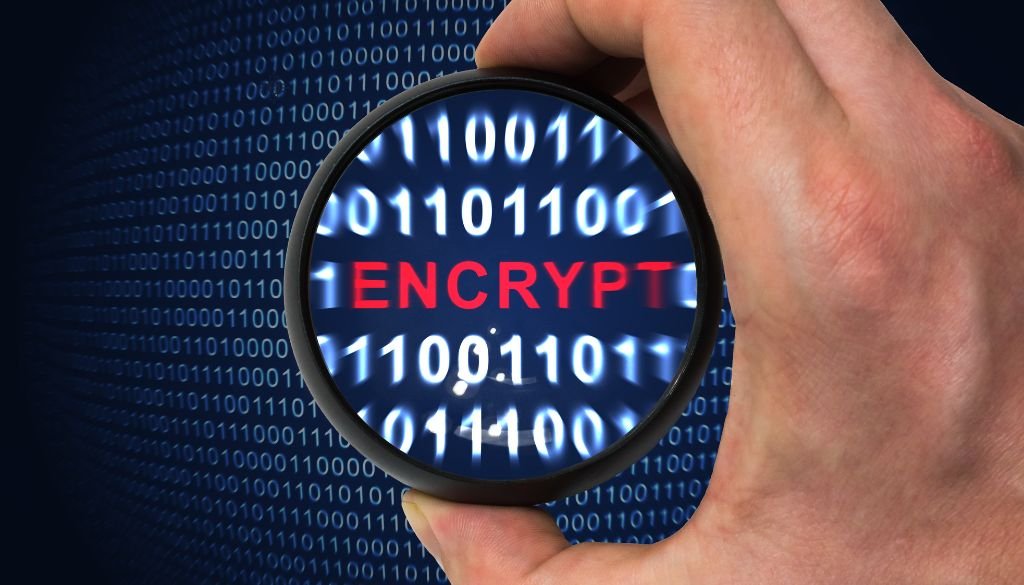Introduction
In today’s digital world, data privacy is more crucial than ever. With rising cybersecurity threats, individuals and organizations are striving to keep their information secure. One of the most effective methods of safeguarding data is through end-to-end encryption. But as technology evolves, so do the tactics of cybercriminals, making it necessary to explore innovative approaches to data security—including resetting encrypted data.
What Does Reset E2E Encrypted Data Mean?
Resetting end-to-end encrypted data refers to refreshing the encryption keys that are used in securing data transfer channel among parties. Resetting of encrypted data is unlike conventional resetting of data which may involve erasing or reformatting the data. It entails generation of new cryptographic keys and re-encrypting the same with these new keys.
This process ought to take place when there are suspicions that the encryption keys have been compromised or as part of routine security protocols to improve on data protection. By doing this, users are able to set up their encryption in such a way that even if older keys were discovered, former messages will still remain secure and inaccessible for unauthorised persons.

Understanding End-to-End Encryption
What is End-to-End Encryption?
End-To-End Encryption (E2EE) is a method of protecting information by ensuring that it can be read only by the people who communicate through it. In this model, the information gets encoded on the sender’s device and only decoded at recipient’s one thus making it possible for no third-parties including service providers could access it.
How Does It Work?
These messages are encoded and written in them using cryptographic key pairs which are exclusively known to each participant. User communications are protected by E2EE on well-known platforms like Signal or WhatsApp.
Why Is It Important?
Because E2EE can prevent unauthorized disclosure of valuable confidential information; yet encrypting both ends of communication makes it nearly impossible for hackers, government agencies or even service providers themselves to understand what is being communicated between two communicating parties.
Examples of Key Rotation in Resetting End-to-End Encrypted Data
Regular Key Rotation in Messaging Apps:
Many secure messaging apps, such as WhatsApp and Signal, implement periodic key rotation as a standard security measure. These apps ensure that even if a key is compromised, only limited data is exposed by regularly changing the cryptographic keys used for encryption of messages. Such helps to maintain the ongoing security of user communications and makes it more difficult over time for attackers to break into deciphering messages.
Cloud Storage Services:
Cloud storage services like Google Drive and Dropbox sometimes use key rotation as part of their broader security protocols. For example, these platforms might rotate encryption keys for stored files at regular intervals or whenever there are signs of potential breach. Thus, they re-encrypt with new keys all user files so that any previously hacked ones cannot be used again; hence maintaining confidentiality and integrity of the stored data.
Enterprise Data Security Solutions:
Large enterprises often deploy key rotation practices to secure sensitive corporate data. In this case, companies might automate the process through using Key Management Service (KMS) like Azure Key Vault or AWS Key Management Service (AWS KMS) for rotating encryption keys. Such services offer an easy way to periodically refresh cryptographic keys on-the-fly with an aim to keep business-sensitive information immune against evolving types of online threats.
Financial Institutions:
In financial sector, institutions such as banks typically employ key rotation methods to safeguard transactional data from attacks. Financial systems designed for processing transactions, customer details and account particulars use strong encryption techniques that involve regular key rotation processes. This minimizes chances of hacking vulnerabilities enabling tight cybersecurity framework thus protecting sensitive financial information from intruders.
These examples demonstrate how implementing key rotation constitutes proactive measures towards end-to-end encrypted data’s continued safety.Therefore, this practice strengthens not only data protection but also improves resistance among other things in view of developing weaknesses and cyber-crimes in encryption systems.
The Need for Resetting Encrypted Data
Evolving Cybersecurity Threats
As cybersecurity threats become more sophisticated, the integrity of even the most secure encryption methods can be jeopardized. Cybercriminals are constantly developing new techniques to exploit vulnerabilities, making it essential to stay one step ahead.
Periodic Data Reset
Regularly resetting encrypted data can mitigate the risk posed by prolonged use of static encryption keys. By updating these keys periodically, businesses and individuals can enhance their security posture, making it more difficult for malicious actors to crack the encryption.
How Resetting End-to-End Encrypted Data Works

Technical Process
Resetting end-to-end encrypted data involves re-encrypting the data with new cryptographic keys. This process ensures that any previously intercepted data is rendered useless, as the old keys become obsolete.
- Key Rotation: The primary method for resetting encrypted data is key rotation. This involves generating new encryption keys at regular intervals while securely disposing of the old ones.
- Data Re-encryption: Once new keys are generated, the existing data is decrypted using the old keys and then re-encrypted using the new keys.
- Secure Key Distribution: The new keys must be securely distributed to all authorized users to maintain seamless communication.
Benefits and Challenges
Advantages of Resetting Data
- Enhanced Security: Regularly resetting encrypted data reduces the risk of long-term vulnerabilities.
- Future-Proofing: By staying proactive, organizations can adapt to emerging threats and maintain robust security.
- Compliance: Some regulatory frameworks mandate periodic key rotation to ensure continued data protection.
Potential Challenges
- Complexity: Implementing key rotation and data re-encryption can be technically complex and resource-intensive.
- User Disruption: Frequent key changes might cause temporary disruptions in communication and data access.
- Compatibility: Ensuring compatibility across different devices and platforms can be challenging when implementing data resets.
Resetting End-to-End Encrypted Data: A User Guide
Resetting end-to-end encrypted (E2EE) data is a crucial task that ensures the ongoing security of your communications and stored data. This user guide outlines the key steps and best practices for effectively resetting encrypted data.
Step-by-Step Guide to Resetting Encrypted Data
1. Plan Your Data Reset Schedule:
- Determine the appropriate frequency for key rotation based on your security needs and regulatory requirements.
- Create a reset schedule that minimizes disruption to regular operations while maintaining robust security.
2. Backup Important Data:
- Prior to initiating a data reset, ensure that all important data is backed up securely to prevent any loss during the process.
- Use encrypted backups to maintain data confidentiality during storage.
3. Generate New Encryption Keys:
- Use a reputable key management service (KMS) or cryptographic library to generate new encryption keys.
- Ensure that the key generation process follows industry standards and best practices for secure key creation.
4. Notify Authorized Users:
- Inform all authorized users about the impending data reset to prepare them for any temporary disruptions.
- Provide instructions on how users can update their systems with new keys.
5. Rotate and Re-encrypt Data:
- Begin key rotation by securely deactivating the old keys and updating your systems with the new keys.
- Decrypt existing data using the old keys and then re-encrypt it using the new keys.
- Ensure the re-encryption process is performed efficiently to minimize downtime.
6. Distribute New Keys Securely:
- Use secure channels to distribute the new encryption keys to authorized users.
- Avoid sharing keys through insecure methods such as email or public messaging platforms.
7. Validate and Test:
- Verify that all data has been successfully re-encrypted and that the new keys are functioning correctly.
- Test the system to ensure that users can access data seamlessly without encountering errors.
8. Securely Dispose of Old Keys:
- Destroy the old encryption keys securely to prevent any possibility of unauthorized access.
- Use methods such as cryptographic key shredding or hardware security module (HSM) disposal for this purpose.
Best Practices for Maintaining Encrypted Data Security
- Automate Processes: Utilize automated key rotation and re-encryption tools offered by KMS providers to ensure consistency and reduce manual errors.
- Monitor and Audit: Regularly monitor key usage and perform audits to detect and respond to any anomalies or potential security breaches.
- Educate Users: Train authorized users on the importance of E2EE and key rotation, emphasizing their role in maintaining overall data security.
- Stay Updated: Keep abreast of the latest developments in cryptography and cybersecurity to ensure your practices remain effective against emerging threats.
By following this user guide, you can effectively reset end-to-end encrypted data, enhancing the security of your communications and protecting sensitive information from unauthorized access.
How Does End-to-End Encrypted Data Publicly Work?
End-to-end encrypted data works by ensuring that only the communicating parties can access the information being transmitted. Here’s a breakdown of how it functions publicly:
Key Pair Generation and Exchange
User Key Pairs:
When users first set up an end-to-end encrypted system, cryptographic key pairs (a public and a private key) are generated. The private key remains securely on the user’s device, while the public key is shared with the intended recipients.
Key Exchange:
For communication to occur, users exchange public keys with one another through a secure method, ensuring that only the intended parties can encrypt and decrypt the messages.
Encryption Process
- Message Encryption: When a user wants to send a message, the encryption algorithm uses the recipient’s public key to encrypt the data. This means the message can only be read by the recipient, who has the corresponding private key.
- Transmission: The encrypted message is transmitted over the internet. Since the data is encrypted, it remains secure even if intercepted by unauthorized entities.
Decryption Process
- Receiving the Message: Once the recipient receives the encrypted message, their device uses the private key to decrypt it. This converts the message back into its original readable format.
- End-to-End Security: Throughout this process, only the communicating parties have access to the plaintext message, ensuring end-to-end security.
Public Verification
Digital Signatures:
To verify the authenticity of the messages publicly, digital signatures can be used. The sender signs the message with their private key, and the recipient can verify the signature with the sender’s public key, ensuring the message has not been altered.
Public Services and Communication
Public Platforms:
Various public platforms, including messaging apps and email services, now incorporate end-to-end encryption. This ensures that even the service providers cannot access the content of the communications.
Regulatory Compliance:
While public services using end-to-end encryption must comply with regulatory requirements, they ensure that user data remains confidential and protected from unauthorized access.
By implementing these processes, end-to-end encryption maintains the integrity and confidentiality of data, reinforcing public trust in digital communications.
What’s going to happen if I reset end-to-end encryption?
Several important steps must be taken when resetting end-to-end encryption (E2EE) in order to ensure that your data is secure and unauthorized access is not allowed during the process.
Here’s what will happen during this process:
Temporary Disruption
Services will temporarily stop once you initiate the reset as existing encryption keys are made inactive while new keys are generated and issued. For this reason, communication can be put on hold while some information may not be accessible.
Key Generation
To preserve the integrity and safety of the encryption system, a secure key management service (KMS) or trusted cryptographic library should be used to generate new cryptographic key pairs.
User Notification
Authorized users will receive notifications about these changes so that they can update their systems with the new encryption keys, and possibly adhere to certain instructions provided for continuous data access and communication.
Data Re-encryption
All existing files that were previously encrypted using old keys would have to be decrypted first before being encrypted again using newly created keys. In doing this, all data will be kept safe within the newly set parameters for encryption.
Secure Key Distribution
It is crucial that these keys are not sent via unsecured channels such as email or unencrypted messaging platforms but rather through channels which guarantee security like special delivery services for authorized users.
Validation and Testing
A validation process will confirm that all data has been correctly re-encrypted and that the new keys are functioning properly. Users’ ability to access data without issues can only be characterised by successful testing.
Disposal of Old Keys
Older encryption keys must then be disposed securely in order to prevent unauthorized entry into them by destroying them cryptographically or disposing of them through hardware security modules (HSMs).
Future Implications
The Role of Resetting in Data Privacy
The concept of resetting encrypted data is poised to play a significant role in the future of data privacy. As cyber threats continue to evolve, resetting encryption keys could become a standard practice for maintaining data integrity.
Technological Advancements
With advancements in quantum computing on the horizon, traditional encryption methods may face new challenges. Periodic data resets could serve as a preventive measure to counteract the potential risks posed by quantum decryption capabilities.
Conclusion
In the digital age, safeguarding data privacy is paramount. End-to-end encryption remains a critical tool for securing communications, but it is not infallible. By exploring the concept of resetting encrypted data, we can enhance our security measures and stay ahead of emerging threats.
Call to Action
We’d love to hear your thoughts on the future of data privacy and the role of end-to-end encryption. Share your insights and join the conversation on how we can collectively enhance cybersecurity.
Feel free to share this post with your network and engage with us on the latest in data security.
FAQs
Q1: What does end-to-end encryption (E2EE) means?
A1: End-to-end encryption (E2EE) is a secure communication channel that enables only the users involved in the conversation to read their messages. The text is coded on the sender’s device and decrypted just at the receiver’s gadget, thus making it impossible for third parties like service providers gain any access to encrypted information.
Q2: Why should encrypted data be reset periodically?
A2: Resetting encrypted data regularly helps mitigate potential issues related to using static encryption keys for an extended period of time. By frequently refreshing these keys, entities and individuals can lower chances for unauthorized entry as well as anticipate modern cyber threat trends.
Q3: What is done during resetting encrypted data?
A3: Common steps include key rotation, re-encryption of files, and secure key transmission. Key rotation generates new encryption keys periodically, decrypts old records and re-encrypts them using the updated keys and shares new keys securely with authorized users.
Q4: What are some advantages of resetting encrypted data?
A4: It mainly enhances security, offers protection from unforeseen incidents and complies with legal requirements. Regularly replacing encryption codes will help minimize exposure to vulnerabilities so that sensitive files remain safe from more complex cyber-attacks.
Q5: What might be difficult when you are resetting encrypted data?
A5: Challenges here could involve technical intricacy regarding key rotation and file re-encryption, possible disruptions in user communication or access to information as well as compatibility across diverse platforms or operating systems.
Q6: How does quantum computing affect need for resets?
A6: Quantum computing has the potential of undermining traditional security techniques through its exceptional computational capabilities. Consequently, routine data resets may alleviate risks stemming from quantum decryption ensuring that future generations’ secret code remains intact.
Q7: Is there compliance requirement for key rotation?
A7: Yes, periodic key rotation is a requirement in some regulatory frameworks as part of their data protection guidelines. It is intended to ensure that sensitive information continues to be safe and that there is conformity with privacy laws governing data.
Further inquiries can be forwarded to our website or directly communicated to us.
If I Reset iPhone End-to-End Encrypted Data, What Happens?
When you reset the end-to-end encrypted data on your iPhone, you may lose certain types of information and settings that depend on this encryption type.
This includes:
- iCloud Keychain: Any saved passwords, credit card information, and Wi-Fi network details contained in iCloud Keychain will be removed.
- Messages in iCloud: Your iMessage and SMS/MMS message history synced across devices through iCloud may disappear completely.
- Health Data: All health-related statistics such as activity measurement, workouts, medical records encoded using end-to-end encryption might vanish.
- Home Data: Configuration details about smart home automation gadgets known as HomeKit like configurations can go away during such resets
- Voice Memos: When end-to-end encrypted voice memos are stored in iCloud they become inaccessible when resetting the device for whatever reason.
- Safari Data: When restored to factory default setting, Safari histories which have been encrypted also get erased.
Before you go ahead with resetting make sure you make backups so that your desired files would not be lost for good. You should either save an offline copy locally with the help of a computer or at least write down essential notes like passwords and keys securely.






